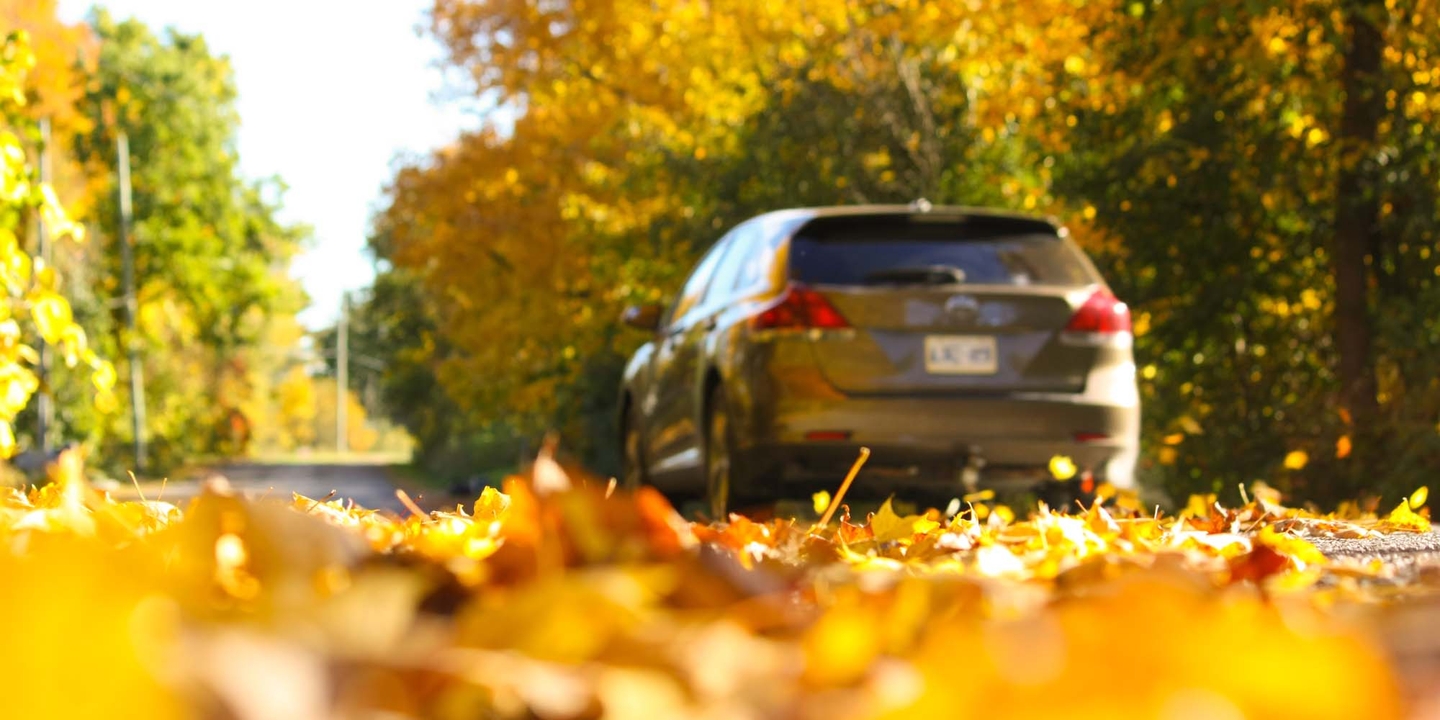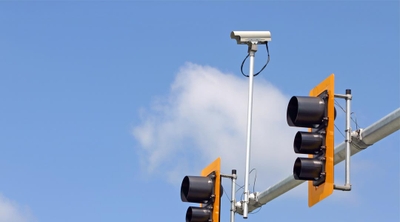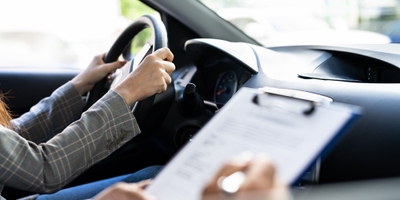Autumn driving tips
4 min read
As the calendar turns and the seasons change, it’s essential to adapt your driving behavior. Fall driving safety should be at the top of your mind when you get behind the wheel once summer ends. Some of the most common fall driving tips include:
- Avoid collisions with deer and other animals
- Be cautious of slippery roads due to wet leaves
- Be aware of kids going back to school
- Know what to do for morning and evening glare and fog
What can be a hazard when driving in autumn?
Animal collisions
Deer collisions are a fact of life for many U.S. drivers throughout the year, but the danger is especially high in the fall during deer mating season. According to the Insurance Institute for Highway Safety, insurance claims related to animal strikes more than double in November. Vehicle damage from hitting a deer is covered if you have comprehensive coverage on your auto insurance policy.
Be alert for deer on the road, especially around sunset and sunrise, when they are most active. If you see a deer on the road, it’s better to brake and stay in your lane. If you swerve, you could end up off the road, in the path of another vehicle, and even end up still hitting the deer. Honking your horn can also get the animal’s attention before you get too close. Find out more about how to avoid hitting a deer.
Deer aren’t the only animals prone to being on the road during the autumn months. Smaller animals like squirrels and chipmunks are also busy gathering food for the winter, which can lead them to dash into traffic suddenly. Hitting a small rodent with your car might not affect your vehicle much (though the unfortunate chipmunk or squirrel will certainly be affected). However, if you suddenly swerve or slam on your brakes to try to avoid running over a critter, you risk losing control of your vehicle or putting yourself in harm’s way of oncoming or following traffic.
Slippery roads
Most people might think of winter driving when it comes to dealing with slippery roads. However, autumn brings its share of road hazards. Wet leaves covering the street can prevent your tires from getting a good grip on the road, while frost formed overnight can compound the threat. Areas that are slower to warm up, such as bridges, underpasses, and other shady areas, can be slick at almost any time of day.
To minimize accidents on slippery roads, drive at a safe speed and keep on the lookout for shady areas, piles of leaves, and other spots that might be slick or icy. Reducing your speed even a few miles per hour could give you enough time to avoid a slippery patch.
It’s also essential to make sure your car is ready for seasonal driving. Winter car maintenance and weather protection preparation is vital, but don’t overlook the fall season. Temperatures can drop in a hurry, and storms can appear with little warning. Make sure you aren’t going too fast for the weather conditions so you can arrive safely to your destination.
Kids and school buses
Fall is back-to-school time for millions of kids around the country. That means lots of school-age children walking home from school or riding a bus. Kids are unpredictable, so slow down and give them plenty of room when you’re driving. Be sure to observe school zone speed limits and obey school bus signals — it’s illegal to pass a school bus when the driver has extended its stop arm and its red lights are flashing.
As the days get shorter, kids may be on the road in low-light conditions, so stay alert. Increasing numbers of schools are moving to staggered start times, which means kids might be heading to school relatively late and finishing early. So, pay attention when driving near schools or in residential neighborhoods, regardless of the time of day.
Glare and fog
When the sun rises later and sets earlier, drivers are more likely to be on the road when the sun is in our line of sight instead of overhead. Using your vehicle’s visors and wearing sunglasses can help you see better, but if your windshield isn’t clean, they’ll be less effective. Keeping the inside and outside of your windshield clean is an easy way to increase your safety and prevent the glass from fogging up.
If you’re already driving and your windshield is fogging, adjust the defroster to mimic the temperature on the outside. You can also open your windows slightly, as long as you aren’t letting rain in, to help equalize the temperature and humidity.
One possible cause of moisture getting into the vehicle and causing the windows to fog up is damaged car weather stripping – the rubber that forms a seal around some of your car’s components, including the windows and windshield. If your weather stripping is damaged or is leaking, you can have it replaced. If you are confident in your vehicle maintenance skills, you can even replace it yourself.
While you may be in a hurry to get out the door on a crisp fall morning, it’s essential that you completely scrape off any frost, snow, or ice from your vehicle before you go — don’t be tempted to clear a peephole and then hop in the car. Not only is it dangerous to drive with your windshield obscured, but you could get pulled over for operating your vehicle in an unsafe manner. If you don’t have a garage or other covered parking available, you might consider investing in a windshield cover to reduce or avoid the amount of scraping you need to do.
All in all, taking a little extra time to slow down, pay extra attention, and be patient can keep you, your passengers, and other motorists and pedestrians safer in autumn driving conditions.






